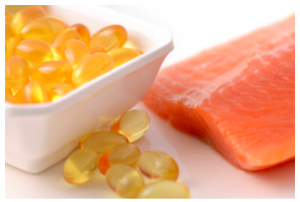Glutamine: Super Supplement? Or Overhyped and Worthless? Cutting through the Bull
One of several so called, “super-supplements”, to have hit shelves over recent decades is glutamine, the most abundant amino acid ...

One of several so called, “super-supplements”, to have hit shelves over recent decades is glutamine, the most abundant amino acid ...
If you eat a well balanced "healthy" diet, are supplements REALLY necessary to optimize progress? Learn some surprising reasons why ...
When it comes to “Junk” food. First we must clarify what “junk” is. Carbohydrates themselves for example don’t make you ...
The hormonal and metabolic processes that occur during sleep The three primary factors to consider for those seeking muscle hypertrophy ...
In matters physiological, the process of occlusion has largely negative connotations. Occlusion, meaning to shut off or obstruct, of a ...
Worried about overtraining? MI40 Top Gun Bryce Bahm is here with some simple steps you can take to byass the ...
Most hard working bodybuilders, from rank beginner to seasoned pro, will experience some degree of training-related muscle soreness. Whether experienced ...
Even a slight vitamin deficiency can halt muscle gain in its tracks... the scary thing is, you're probably deficient already! ...
There is, without a doubt, a no more difficult area of the body to develop muscle size and strength, than ...
The process of muscle growth is best stimulated with high volume using relatively moderate weights. But to get stronger faster, ...
Key Point Summary: – There are 5 ‘levels’, or stages, you must implement IN ORDER to optimize fat loss. – ...
Omega-3s are one of the fats that actually have gotten a lot of good press. In this case it’s actually still not enough as recovery from the ages of demonizing fats in our diets. There are two main Omega-3 types: EPA (eicosapentaenoic acid) and DHA (docosahexaenoic acid). The simple way to look at them is EPA is what is responsible for the anti-inflammatory properties of omega 3’s while DHA supports the brain and nerve tissues. Both EPA and DHA can be converted into their counterparts but it is biochemically easier for your body to make EPA from DHA.
Health benefits from optimal omega-3 levels include decreased chronic inflammation and pain, better cardiovascular health, peak brain function, fat loss, improved insulin sensitivity, lower blood pressure, decreased risk of Alzheimer’s, and improved athletic performance. Omega-3s can improve the health of every cell in the body because they improve the quality of cell membranes which improves cellular communication with other cells, hormones and peptides your body makes.
 The key to omega-3 supplementation is to ensure you are getting enough, and that you are taking omega-3s and not too many omega-6s. Omega fatty acids are not all the same. Omega-3s and omega-6 fatty acids differ greatly in promoting health in the body. Omega-6s tend to be very abundant in our diet. They are the most common fat in most oils, as well as making up a large chunk of the fat from meat, vegetables, and some nuts. The majority of the population has an excessively skewed ratio of omega-6 to -3 fatty acids that may cause poor health. Omega-6s themselves have many health benefits and are not bad for you in the right dose. They are actually essential as well. Omega 6’s are the most abundant fat in the SAD (Standard American Diet). Omega 6 fats are pro-inflammatory when elevated. A typical North American diet may contain 11 to 30 times more omega-6 fatty acids than omega-3 fatty acids, contributing to the rising rate of inflammatory disorders in the United States.
The key to omega-3 supplementation is to ensure you are getting enough, and that you are taking omega-3s and not too many omega-6s. Omega fatty acids are not all the same. Omega-3s and omega-6 fatty acids differ greatly in promoting health in the body. Omega-6s tend to be very abundant in our diet. They are the most common fat in most oils, as well as making up a large chunk of the fat from meat, vegetables, and some nuts. The majority of the population has an excessively skewed ratio of omega-6 to -3 fatty acids that may cause poor health. Omega-6s themselves have many health benefits and are not bad for you in the right dose. They are actually essential as well. Omega 6’s are the most abundant fat in the SAD (Standard American Diet). Omega 6 fats are pro-inflammatory when elevated. A typical North American diet may contain 11 to 30 times more omega-6 fatty acids than omega-3 fatty acids, contributing to the rising rate of inflammatory disorders in the United States.
Ideally, you will have a ratio between the two that is close to 2:1, although slightly more omega-6 fatty acids (4:1) (6’s:3s) and you will still be seeing health benefits. The average population has a ratio closer to 40:1 from over consumption of processed foods and very little intake of omega-3s in their diet.
The most popular dietary source of omega-3s has become fish oil capsules. Grass fed meat mentioned earlier is also a good source of omega 3’s. One thing you must be careful of is many labels will include ALA (alpha linoeic acid) as omega 3’s. The truth is that only about 4% of the ALA actually gets converted to omega 3. This means sources like flax seed oil and powder actually offer very little dietary omega 3’s. Flax seed oil is commonly rancid as well. One of the issues with fats, is that the become rancid over time, and then become much more inflammatory and have a negative impact on our health. Processed foods and cooking oils are often filled with rancid fats. Getting your fats from fresh sources is always advisable, or in a stable form like a high quality fish oil capsule.
Take Away: The omega-3s DHA and EPA are absolutely essential in your diet. They will support the health of every cell in the body. They can counter chronic inflammation, support the brain, prevent cognitive decline, help with fat loss, and protect the heart among many other things.
 For someone who wants to lose fat, decreasing the amount of insulin you need will decrease the fat storing response to your diet, help you manage your blood sugar better, and burn more fat. One of the most common condition in obese individuals is a very poor sensitivity to insulin, meaning they have to produce a lot. Some doctors and scientists go as far as to say the more insulin you produce the faster you age overall. improving insulin sensitivity by increasing omega-3s will do wonders for your health, and drastically improve your progress towards a leaner physique.
For someone who wants to lose fat, decreasing the amount of insulin you need will decrease the fat storing response to your diet, help you manage your blood sugar better, and burn more fat. One of the most common condition in obese individuals is a very poor sensitivity to insulin, meaning they have to produce a lot. Some doctors and scientists go as far as to say the more insulin you produce the faster you age overall. improving insulin sensitivity by increasing omega-3s will do wonders for your health, and drastically improve your progress towards a leaner physique.
For someone looking to build muscle, the more insulin sensitive you are, the easier it is to gain muscle because you can utilize more carbohydrates post workout, and feed your muscles more effectively. This also will limit the amount of fat mass gained when attempting to pack on pounds of muscle. Omega-3’s are also a natural anti inflammatory, which decreases overall stress in the body so more energy can be spent on building muscle and less on dealing with inflammation. Keeping inflammation down also helps maximize the amount of time you can spend in the gym without aches and pains limiting your workouts.
Research has shown that taking 3 grams of omega-3s per day is a safe continuous dose to maintain optimal health benefits. Those who eat a lot of fresh fish and wild game may find they can get by with smaller dosages.
If you have a high body-fat and are rehabbing from the SAD diet, a period of 1-2 months of 10g of omega-3s may jumpstart your body composition and muscle building results.